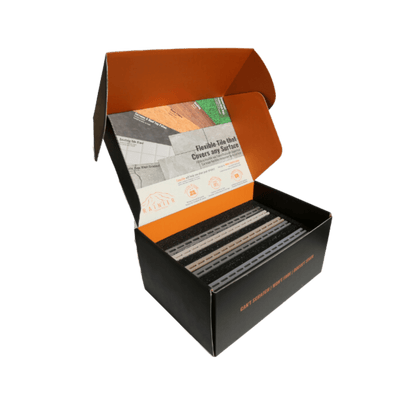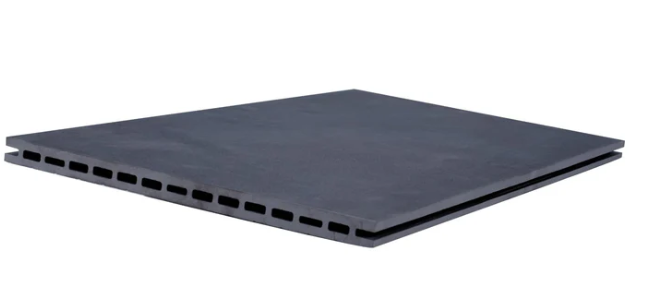Oil stains on paver stones are not only unsightly but can also be quite difficult to remove if not treated properly. Whether it’s a spill from your car, barbecue, or a dropped container of oil, these stains can create an eyesore in your outdoor space. Fortunately, there are effective and easy ways to get rid of oil stains from paver stones. In this guide, we'll walk you through the process, share some valuable tips, and provide you with a table to help you choose the right method based on your needs.
Why Do Oil Stains Appear on Pavers?
Oil stains are more likely to show up on paver stones due to their porous nature. When oil is spilled, it seeps into the surface, making it harder to clean compared to non-porous surfaces. Over time, if the stain is not removed, the oil can penetrate deeper, causing a more stubborn and long-lasting mark.
Steps to Remove Oil Stains from Paver Stones
Removing oil stains from paver stones requires a combination of techniques and materials. The key is to act quickly before the oil has a chance to seep deeply into the stone. Here’s a step-by-step guide:
Step 1: Assess the Stain
Before you begin cleaning, assess the size and age of the oil stain. Fresh oil stains are generally easier to remove than older ones that have had time to settle in. If the stain is old and deeply embedded, you may need to apply a stronger cleaning solution or repeat the cleaning process.
Step 2: Blot the Stain
If the oil spill is recent, start by blotting up as much oil as possible with paper towels or a clean cloth. Be careful not to rub the stain, as this can push the oil further into the paver stones. The goal is to absorb as much oil as possible before proceeding to the next step.
Step 3: Apply an Absorbent Powder
Once you’ve blotted up the excess oil, apply an absorbent material to the stain to draw out the remaining oil. Common options include:
-
Baking Soda: This is a highly effective absorbent material that can soak up oil from paver stones.
-
Cat Litter: If you have some lying around, cat litter works similarly to baking soda.
-
Cornstarch: Another absorbent powder, cornstarch can also help lift oil from the surface.
Sprinkle a generous amount of your chosen absorbent powder over the stain, then let it sit for 15-30 minutes. Afterward, use a broom or brush to sweep the powder away.
Step 4: Scrub with Soap and Water
For stubborn stains that remain after blotting and powder application, you can use a mild soap solution. Mix warm water with a few drops of dish soap or a degreasing detergent. Using a stiff-bristled brush, scrub the stain in a circular motion. Be sure to scrub the entire area to prevent any oil residue from remaining. Rinse the pavers with clean water once you’ve scrubbed away the oil.
Step 5: Use a Pressure Washer (Optional)
If the stain persists, using a pressure washer can be an effective solution. The powerful stream of water helps dislodge the oil that may have soaked into the stone. Be cautious with the pressure setting to avoid damaging the paver stones. Aim for a gentle, even spray to clean the surface without causing erosion.
Step 6: Apply a Stone Cleaner or Degreaser
If all else fails, you may need to use a commercial stone cleaner or degreaser. These products are specifically designed to break down grease and oil, making them perfect for paver stones. Follow the manufacturer’s instructions carefully for the best results.
Step 7: Seal the Stones (Optional)
Once the stain is removed and the surface is clean, consider sealing your pavers to help prevent future stains. Sealing creates a protective barrier on the surface of the pavers, making them less porous and more resistant to spills. If your pavers are frequently exposed to oil or other substances, sealing them can help maintain their appearance for a longer period.
Table: Methods for Removing Oil Stains from Paver Stones
|
Method |
Materials Needed |
Effectiveness |
Best for |
Instructions |
|
Blotting & Absorbent Powder |
Paper towels, baking soda/cat litter/cornstarch |
Moderate to High |
Fresh oil stains |
Blot the stain with towels, apply absorbent powder, let it sit for 15-30 minutes, then sweep away. |
|
Dish Soap & Water |
Mild dish soap, warm water, stiff brush |
Moderate |
Recent or light stains |
Mix soap with warm water, scrub the stain with a stiff brush, and rinse thoroughly. |
|
Pressure Washing |
Pressure washer, water |
High |
Stubborn stains and large areas |
Use a pressure washer on a low setting to clean the stained area. Be careful not to damage the pavers. |
|
Commercial Stone Cleaner |
Commercial stone cleaner or degreaser |
High |
Stubborn, old stains |
Apply the cleaner per the manufacturer's instructions. Scrub the area and rinse thoroughly. |
|
Sealing Pavers |
Paver sealer |
Preventative |
After stain removal |
Apply a paver sealer to prevent future oil stains and enhance the appearance of the pavers. |
Tips for Preventing Oil Stains on Pavers
While it's important to know how to remove oil stains, prevention is always better than the cure. Here are some tips to help prevent oil stains from forming on your paver stones:
-
Use Oil Mats or Drip Trays: Place oil mats or drip trays under your vehicle or barbecue to catch any oil spills before they reach the pavers.
-
Clean Spills Immediately: If you notice an oil spill, clean it up immediately to prevent it from soaking into the pavers. The longer the oil sits, the harder it will be to remove.
-
Seal Your Pavers: As mentioned earlier, sealing your pavers provides a protective barrier that helps prevent oil from penetrating the surface.
-
Regular Cleaning: Regularly sweep and clean your paver stones to remove any oil or grease that may have accumulated over time.
-
Be Mindful During Maintenance: When working on your car or grilling, try to avoid dropping or spilling oil on the pavers. Use a tarp or old newspapers to catch any leaks.
Removing oil stains from paver stones doesn’t have to be a difficult task. By following the right methods and acting quickly, you can restore the beauty of your outdoor space. Whether it’s a fresh spill or an old stain, there are various ways to tackle the problem—from using simple absorbent powders to applying commercial cleaners and even pressure washing.
To ensure the longevity of your paver stones, be proactive about cleaning and consider sealing the stones for added protection. With the steps and methods outlined in this guide, your pavers will look as good as new in no time!






